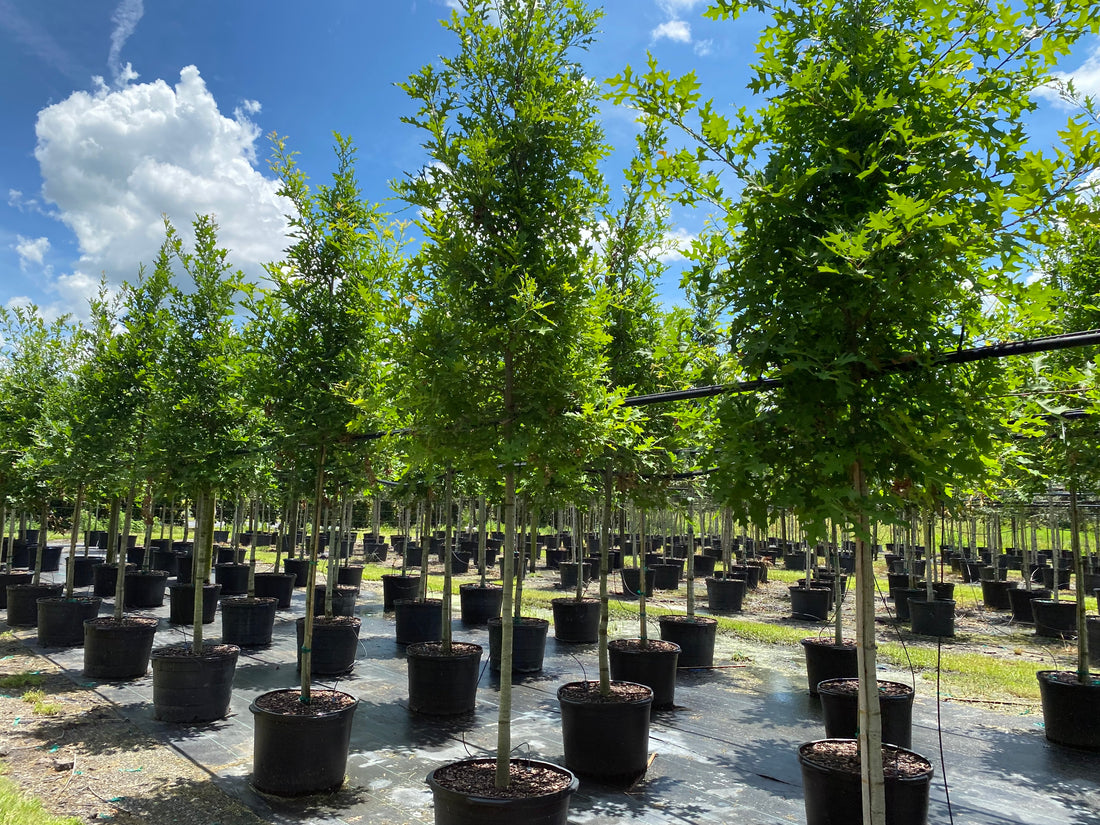
How to Care for Newly Planted Trees: A Guide to Ensure Strong, Healthy Growth
Share
Planting a new tree is an exciting step toward enhancing your landscape. However, the first few months after planting are critical to a tree's long-term health and growth. Proper care ensures that your new tree establishes a strong root system and adapts well to its new environment. At Flowing Well Tree Farm, we want to help you nurture your newly planted trees with the right care techniques. Here’s a guide to get you started.
1. Watering: Keep the Roots Hydrated
Watering is the most important factor in caring for newly planted trees. The key is to keep the soil around the root ball moist, but not overly saturated. Here’s a general rule:
- First 2 weeks: Water daily to ensure the roots stay moist.
- 3 to 12 weeks: Water 2 to 3 times per week, depending on rainfall.
- 3 to 6 months: Water weekly during dry spells.
It’s best to water deeply so the moisture reaches the entire root zone. Use a slow trickle from a hose at the base of the tree for 30 to 60 minutes.
2. Mulching: Protect the Roots and Retain Moisture
Mulch is essential for protecting your tree's roots and retaining moisture in the soil. Apply a 2 to 3-inch layer of organic mulch, such as wood chips or bark, around the base of the tree. Spread the mulch in a wide circle, but avoid piling it directly against the trunk (often called a mulch volcano), as this can cause rot and pest issues.
3. Staking: Only When Necessary
Not all trees need staking, but if your tree is in a windy area or has a weak trunk, you may need to stake it for extra support. Use flexible tree ties to secure the tree to stakes, ensuring the tree can still move slightly with the wind. Remove the stakes after the first growing season to avoid restricting the tree's natural growth.
4. Pruning: Minimal at First
Newly planted trees need time to establish their root systems, so avoid heavy pruning during the first year. Only remove dead, damaged, or crossing branches. This light pruning helps maintain the tree’s structure without stressing it. As the tree matures, you can gradually begin shaping it.
5. Fertilizing: Not Immediately Necessary
Most newly planted trees don’t need fertilizer right away, as the tree is focused on root development rather than top growth. However, if your soil is poor or lacking in nutrients, you can apply a slow-release, balanced fertilizer after the first year. Be cautious not to over-fertilize, as this can burn young roots.
6. Monitoring for Pests and Disease
Check your newly planted trees regularly for signs of pests or diseases. Common issues include leaf discoloration, wilting, and unusual growths. If you notice any signs of trouble, treat the tree promptly with the appropriate organic or chemical treatments. Early detection is key to preventing serious damage.
7. Patience: Trees Take Time to Grow
Trees are long-term investments in your landscape, and they need time to grow and establish themselves. Be patient and provide consistent care in the first few years. By following these steps, your tree will develop a strong root system, adapt to its new environment, and flourish for many years to come.
At Flowing Well Tree Farm, we offer a wide range of premium native and fruiting trees that will enhance your landscape and support local wildlife. Visit us to find the perfect tree for your property and feel confident in your ability to care for it.
